
John Barrington, 1st Viscount Barrington, known as John Shute until 1710, was an English dissenting theologian and Whig politician who sat in the House of Commons from 1715 to 1723.
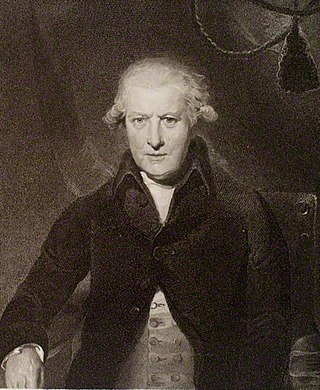
William Wildman Shute Barrington, 2nd Viscount Barrington, PC, was a British politician who sat in the House of Commons for 38 years from 1740 to 1778. He was best known for his two periods as Secretary at War during Britain's involvement in the Seven Years War and American War of Independence.

Viscount Barrington, of Ardglass in the County of Down, was a title in the Peerage of Ireland. It was created in 1720 for the lawyer, theologian and politician John Barrington. He was made Baron Barrington, of Newcastle in the County of Limerick, also in the Peerage of Ireland, at the same time.
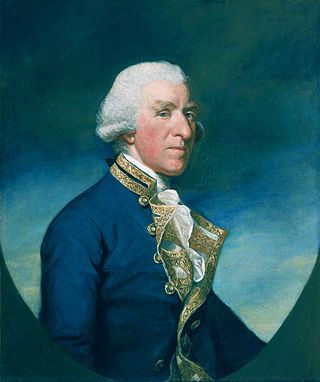
Samuel Hood, 1st Viscount Hood was an English admiral in the Royal Navy. As a junior officer he saw action during the War of the Austrian Succession. While in temporary command of Antelope, he drove a French ship ashore in Audierne Bay, and captured two privateers in 1757 during the Seven Years' War. He held senior command as Commander-in-Chief, North American Station and then as Commander-in-Chief, Leeward Islands Station, leading the British fleet to victory at Battle of the Mona Passage in April 1782 during the American Revolutionary War. He went on to be Commander-in-Chief, Portsmouth, then First Naval Lord and, after briefly returning to the Portsmouth command, became Commander-in-Chief, Mediterranean Fleet during the French Revolutionary Wars. His younger brother was Admiral Alexander Hood, 1st Viscount Bridport (1726–1814), and his first cousin once-removed was Admiral Sir Samuel Hood, 1st Baronet (1762–1814).

Gilbert Stuart was an American painter born in the Rhode Island Colony who is widely considered one of America's foremost portraitists. His best-known work is an unfinished portrait of George Washington, begun in 1796, which is usually referred to as the Athenaeum Portrait. Stuart retained the original and used it to paint scores of copies that were commissioned by patrons in America and abroad. The image of George Washington featured in the painting has appeared on the United States one-dollar bill for more than a century and on various postage stamps of the 19th century and early 20th century.
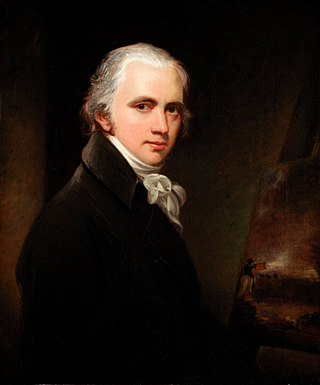
Sir William Beechey was a British portraitist during the golden age of British painting.
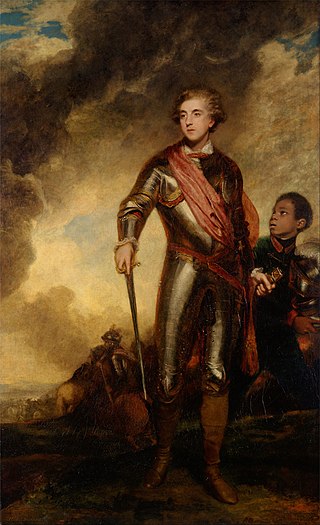
General Charles Stanhope, 3rd Earl of Harrington, styled Viscount Petersham until 1779, was a British Army officer and politician who sat in the House of Commons between 1774 and 1779 when he succeeded to the peerage as Earl of Harrington.
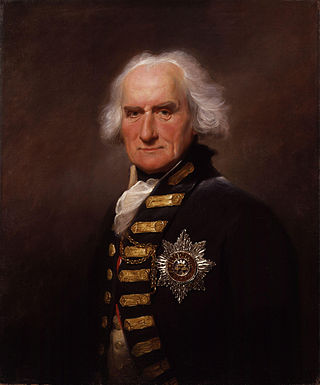
Admiral Alexander Hood, 1st Viscount Bridport, KB, of Cricket St Thomas, Somerset, was an officer of the British Royal Navy during the French Revolutionary Wars and Napoleonic Wars.

Samuel Hood, 2nd Baron Bridport, of Redlynch House in Wiltshire, of Cricket House at Cricket St Thomas in Somerset, and of 12 Wimpole Street in Westminster, was a British politician and peer.
West Downs School, Romsey Road, Winchester, Hampshire, was an English independent preparatory school, which was established in 1897 and closed in 1988.
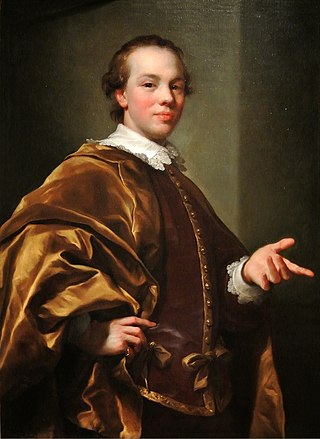
John Stewart, 7th Earl of Galloway,, styled Viscount Garlies from 1747 until 1773, was a British peer who became the 7th Earl of Galloway in 1773 and served as a Member of Parliament from 1761 to 1773.
Thomas Knox, 1st Earl of Ranfurly, styled The Honourable Thomas Knox between 1781 and 1818 and known as The Viscount Northland between 1818 and 1831, was an Irish peer and politician.
Katherine FitzGerald, suo jure Viscountess Grandison (1660–1725), was a wealthy Irish heiress, being the only child of Sir John FitzGerald of Dromana, County Waterford. She inherited the Dromana estate in 1664 upon the death of her father. She was married three times; firstly to John Le Poer, 2nd Earl of Tyrone; secondly to Brigadier-General, Hon. Edward FitzGerald-Villiers; and thirdly and lastly to General William Steuart.
Colonel Rich Ingram, 5th Viscount of Irvine, was an English peer and politician.
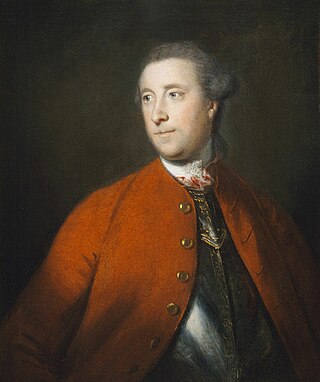
Major-General John Barrington was a British Army officer who was the third son of John Barrington, 1st Viscount Barrington.

The Hon. Henry Frederick Francis Adair Barrington, was a Cape Colony barrister, farmer and member of Parliament of the Cape of Good Hope.

Mary Elizabeth Grey, Countess Grey was a British aristocrat and political hostess. She is notable for being the wife of the prime minister in the 1830s through her marriage to Charles Grey, 2nd Earl Grey.
John Freind Robinson, 1st Baronet was Archdeacon of Armagh from 1786 until his resignation in 1797.
George Barrington, 5th Viscount Barrington, was a British minister and aristocrat.
John Dawson, 1st Earl of Portarlington PC (Ire) was an Anglo-Irish politician and peer.












